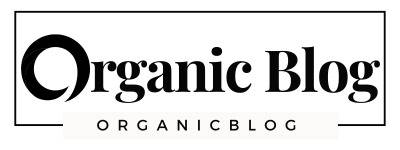
To effectively engage your audience through email marketing, it is crucial to have a deep understanding of who they are. This involves not only demographic information such as age, gender, and location but also psychographic data that reveals their interests, preferences, and behaviors. For instance, if you are targeting a group of young professionals interested in fitness, knowing their preferred workout times, favorite types of exercise, and even their dietary preferences can help tailor your messaging.
This understanding allows marketers to create content that resonates with the audience, making it more likely that recipients will engage with the emails. Moreover, understanding your audience extends to recognizing their pain points and motivations. What challenges do they face that your product or service can solve?
What drives them to make purchasing decisions? Conducting surveys, analyzing past purchase behavior, and utilizing social media insights can provide valuable information for your digital marketing agency. For example, if a significant portion of your audience expresses frustration with time management, you might consider highlighting how your product can save them time or streamline their daily routines.
By addressing these specific needs and desires in your email campaigns, you can foster a stronger connection with your audience.
Crafting Compelling Subject Lines
The subject line is the first impression your email makes on a recipient, and it plays a pivotal role in determining whether your email gets opened or ignored. A compelling subject line should be concise yet informative, sparking curiosity while clearly conveying the email’s value. For instance, instead of a generic subject line like “Our New Products,” consider something more engaging like “Unlock Exclusive Access to Our Latest Fitness Gear!” This approach not only piques interest but also creates a sense of urgency and exclusivity.
Additionally, incorporating personalization into subject lines can significantly enhance open rates. Using the recipient’s name or referencing their previous interactions with your brand can make the email feel more tailored and relevant. For example, “Sarah, Your Personalized Workout Plan Awaits!” directly addresses the recipient and hints at content that is specifically designed for them.
A/B testing different subject lines can also provide insights into what resonates best with your audience, allowing you to refine your approach over time.
Personalizing Email Content
Personalization goes beyond just addressing the recipient by name; it involves creating content that speaks directly to their interests and needs. This can be achieved through dynamic content that changes based on user data. For instance, an e-commerce brand might showcase products based on a customer’s past purchases or browsing history.
If a customer frequently buys running shoes, the email could feature the latest running gear or accessories tailored to enhance their running experience. Furthermore, personalized recommendations can significantly increase engagement and conversion rates. By analyzing customer behavior and preferences, brands can suggest products or services that align with individual interests.
For example, if a subscriber has shown interest in vegan recipes, sending them an email with curated vegan meal plans or cooking tips can create a more meaningful connection. This level of personalization not only enhances the user experience but also fosters loyalty as customers feel understood and valued by the brand.
Utilizing Segmentation and Targeting
Segmentation is a powerful strategy in email marketing that allows brands to divide their audience into smaller groups based on specific criteria. This could include demographics, purchase history, engagement levels, or even geographic location. By segmenting your audience, you can send targeted messages that are more relevant to each group.
For instance, a travel agency might segment its audience into categories such as adventure seekers, luxury travelers, and family vacationers. Each segment would receive tailored content that speaks directly to their travel preferences and interests. Targeting goes hand-in-hand with segmentation and involves delivering the right message to the right audience at the right time.
For example, if a customer has recently browsed vacation packages to Europe but hasn’t made a purchase, sending them a follow-up email with a limited-time discount on those packages could encourage them to finalize their booking. This works really well for bar and restaurant marketing as well. By leveraging segmentation and targeting effectively, brands can increase engagement rates and drive conversions by ensuring that their messages resonate with the specific needs and desires of each audience segment.
Designing Mobile-Friendly Emails
With an increasing number of consumers checking their emails on mobile devices, designing mobile-friendly emails has become essential for effective communication. A responsive design ensures that emails display correctly on various screen sizes, providing an optimal viewing experience regardless of the device used. This includes using larger fonts for readability, ensuring buttons are easily clickable, and avoiding overly complex layouts that may not render well on smaller screens.
In addition to responsive design, it is important to consider the loading speed of images and content within emails. Large images can slow down loading times, leading to frustration for mobile users who may abandon the email before it fully loads. Utilizing compressed images and keeping the overall file size minimal can enhance user experience significantly.
Furthermore, incorporating clear calls-to-action (CTAs) that are easily accessible on mobile devices can drive higher engagement rates. For example, using prominent buttons instead of text links ensures that users can easily navigate to your website or landing page without difficulty.
Testing and Analyzing Performance
Testing is a critical component of any successful email marketing strategy. By conducting A/B tests on various elements of your emails—such as subject lines, content layout, images, and CTAs—you can gain valuable insights into what resonates best with your audience. For instance, testing two different subject lines for the same email campaign can reveal which one generates higher open rates, allowing you to refine your approach for future campaigns.
Analyzing performance metrics is equally important in understanding the effectiveness of your email campaigns. Key performance indicators (KPIs) such as open rates, click-through rates (CTR), conversion rates, and unsubscribe rates provide valuable data on how well your emails are performing. For example, if you notice a high open rate but low CTR, it may indicate that while your subject line is compelling, the content within the email may not be engaging enough to prompt action.
Regularly reviewing these metrics enables marketers to make data-driven decisions that enhance future campaigns.
Implementing Automation and Drip Campaigns
Email automation allows marketers to send targeted messages based on specific triggers or user behaviors without manual intervention. This can include welcome emails for new subscribers, follow-up emails after a purchase, or reminders for abandoned shopping carts. Automation not only saves time but also ensures timely communication with customers at critical points in their journey.
Drip campaigns are a specific type of automated email sequence designed to nurture leads over time by delivering relevant content at predetermined intervals. For instance, a fitness brand might create a drip campaign for new subscribers that includes a series of emails introducing them to different workout programs, sharing success stories from other customers, and offering exclusive discounts on products related to their interests. This gradual approach helps build trust and keeps the brand top-of-mind as subscribers progress through their decision-making process.
Building and Nurturing Relationships with Subscribers
Building strong relationships with subscribers is fundamental to long-term success in email marketing. This involves consistent communication that provides value beyond just promotional content. Sharing informative articles, tips related to your industry, or exclusive insights can position your brand as a trusted resource rather than just another seller in the market.
Nurturing these relationships also means actively engaging with subscribers through feedback loops. Encouraging recipients to share their thoughts on products or services through surveys or reviews not only provides valuable insights but also makes subscribers feel valued and heard. Additionally, recognizing milestones such as anniversaries or birthdays with personalized messages or special offers can further strengthen these connections.
By fostering genuine relationships with subscribers, brands can cultivate loyalty that translates into repeat business and positive word-of-mouth referrals over time.
